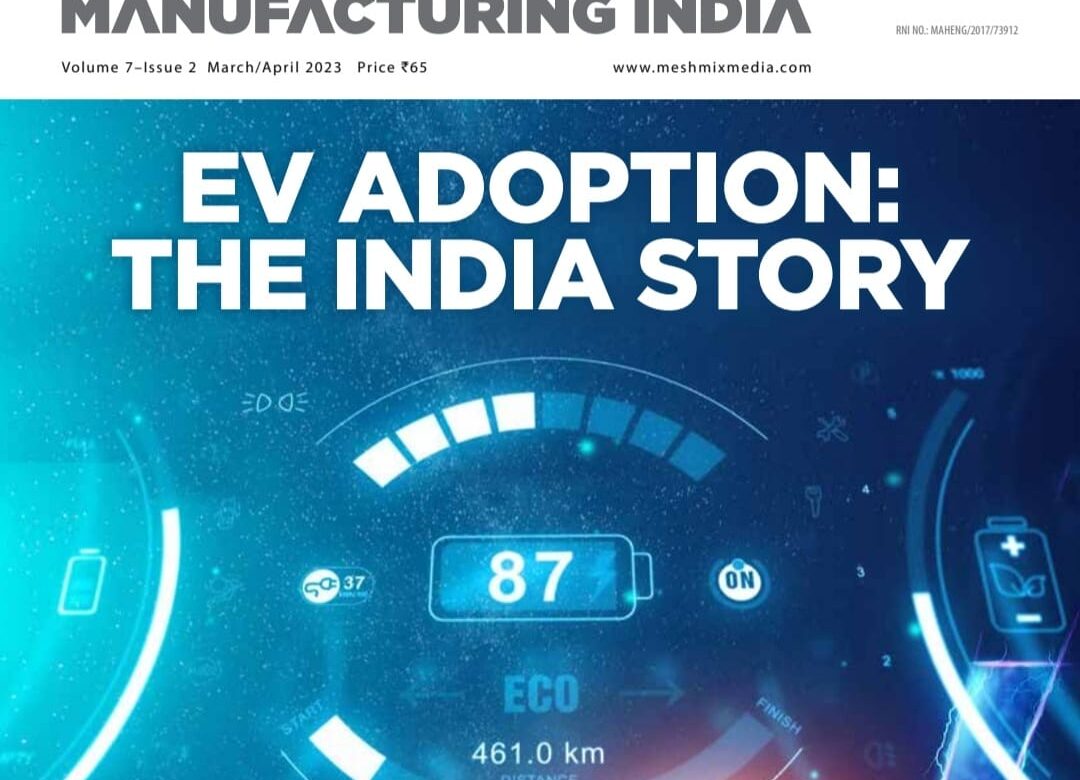Presenting actionable insights and learnings from a power-packed panel discussion that had representation from top industry and government entities. Not to be missed.
In December 2022, we spoked with leaders from the government and the industry about the important aspects of the electric vehicle adoption in India, particularly the ones pertaining to charging infrastructure and battery technology. Presenting, highlights that everyone that has anything to do with the industry, particularly the decision-makers, must pay close attention to. Speakers included Abhijeet Sinha, National Program Director, Ease of Doing Business, and Project Director – NHEV; Sameer Jindal, Director Engineering, MG Motor India; Uday Narang, Chairman, Omega Seiki Mobility; Narayan Kumar, Group Chief, Industrial Devices Division, Panasonic Life Solutions India; Manoj K Sundaram, Head Business Development, ZEISS; and Raman Upamanyu Business Development Manager – EV, Marposs India. Their views have been edited for length and brevity.
Q. Please share with our readers your personal experience of electric vehicles.
Abhijeet Sinha: I have, of course, used electric bikes and cars. My first impression was that the electric vehicle had a different type of a feel; a silent, powerful effect that you have to experience to know. The other thought was that the next generation is not going to look at EVs as a product they are going to look at EVs as a service.

Narayan Kumar: It was about four years ago. This was when I visited our headquarters in Japan. It so happened that the transit vehicle I was traveling in was using Panasonic’s electric battery. This was a Tesla Model 3. When I sat in it, I couldn’t feel whether the vehicle had started or when it was in motion.

Coming back to India, I drove electric two-wheelers and four-wheelers made by leading OEMs, it was a great experience. The overall experience you get is that you are part of a very sustainable ecosystem.
Sameer Jindal: I experienced EV technology about 3-4 years back when we at MG Motor had decided to launch the first electric vehicle in our portfolio – the ZS EV. When it came to me for testing, it had such an incredibly smooth start; it didn’t feel like we had started it.
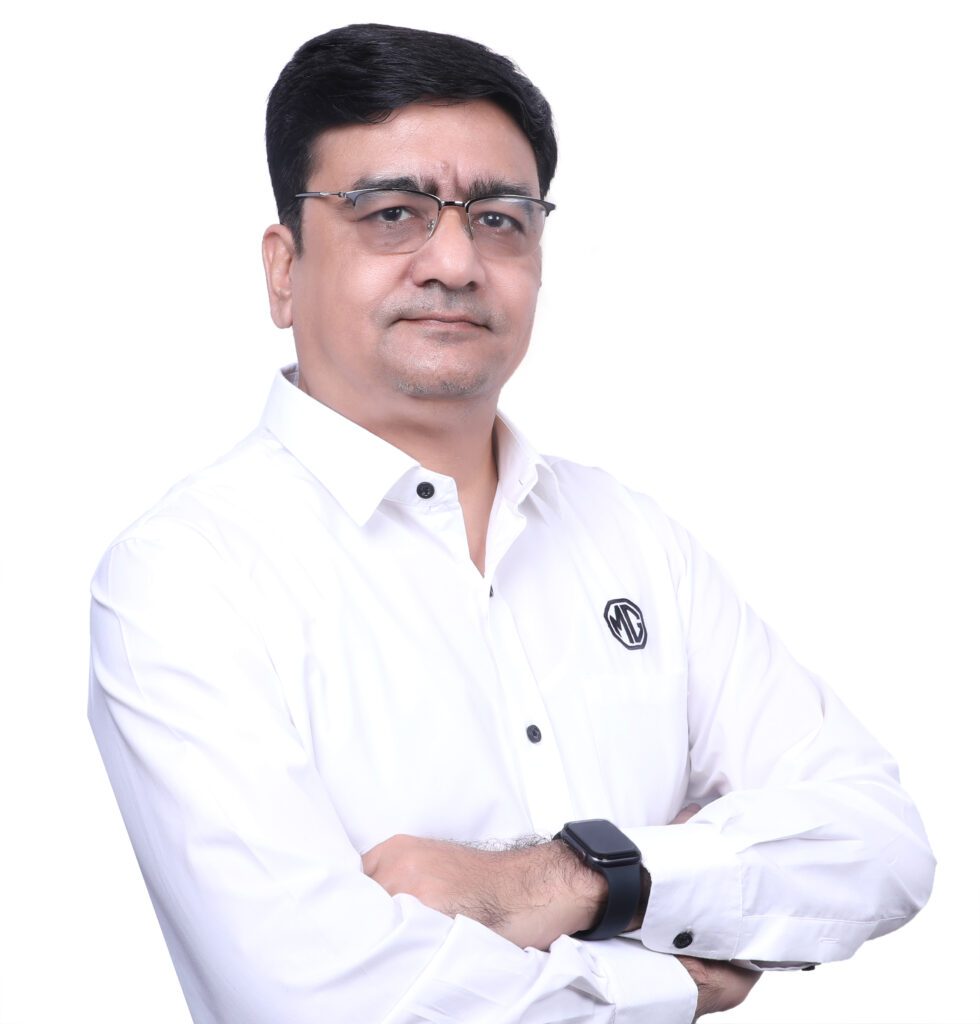
Also, when driving an electric vehicle, one can experience a high initial torque that is not typically found in internal combustion or diesel engines. This is due to the unique motor characteristics of EVs, which make driving them enjoyable for passengers. Driving an EV is truly in a class of its own. Introducing such vehicles in India has become a key focus area for us. In fact, we are now the second-largest provider of EVs in the country.
Uday Narang: Electric vehicle technology is something that I have been passionate about for the last eight or nine years. I’ve been involved in the electric vehicle journey for quite some time in the United States. I decided to come to Asia to focus on the issue of sustainability and make a difference in the transport sector which is one of the largest sources of carbon emissions. Electric 2-wheeler, 3-wheeler, and passenger cars are the best ways to address this issue.
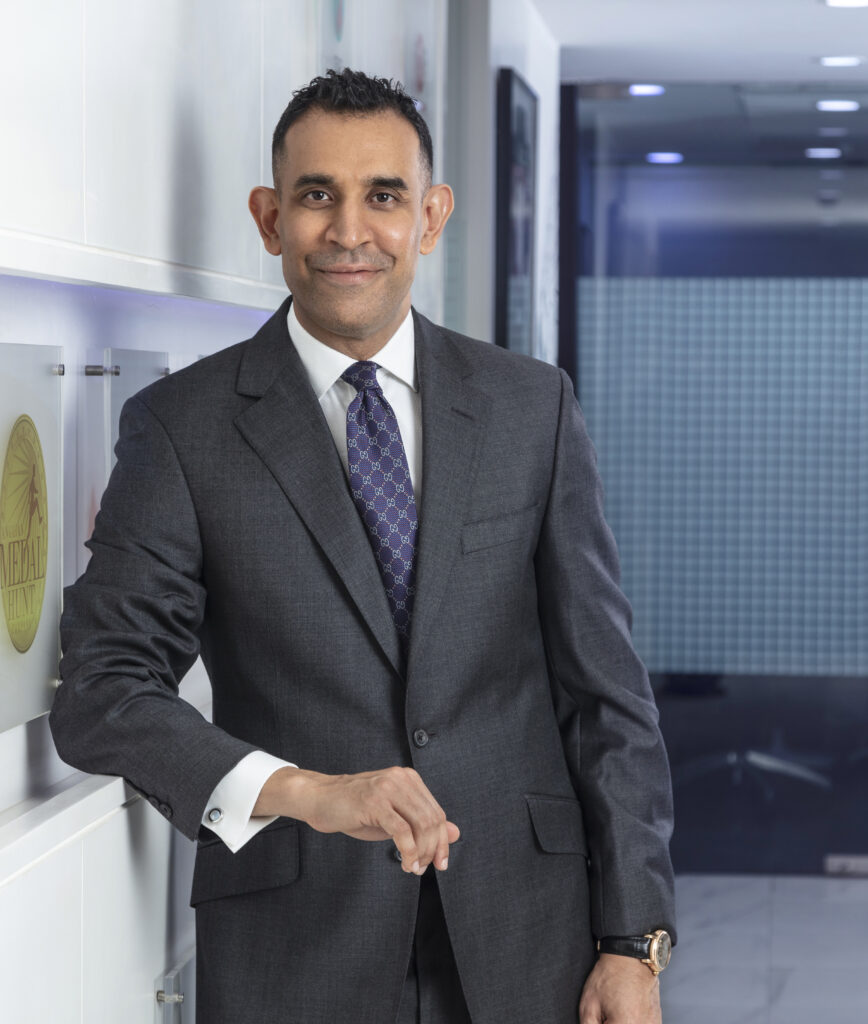
When we (as an organization) first started this journey, we were like Forrest Gump – we were running by ourselves. Now a lot of people have joined us ion the journey. What is more exciting for a person like me who is so driven for green energy and sustainability is that all the big companies like MG Motors, Tata, and Mahindra have joined this game. This will benefit to only one person who matters: the consumer. She will get better products, which are safer and of better quality.
Manoj K Sundaram: It was in the U.S. This was in the second week of September 2016.I landed in the US and I was picked up by my friend in a Tesla. I had not realized the power of Tesla until then. At the time Tesla was not so popular. I was standing one morning with him next his typical American home where you have a garage, a parking spot, and so on. He told me Manoj can you move aside a little, the car is coming. I still remember the moment when I asked that “where is the car coming from, I can’t see it,” when is when I saw a Tesla reversing itself with this fellow standing outside controlling it on his phone. That was the moment I realized what is EV and how it can be a big game changer.
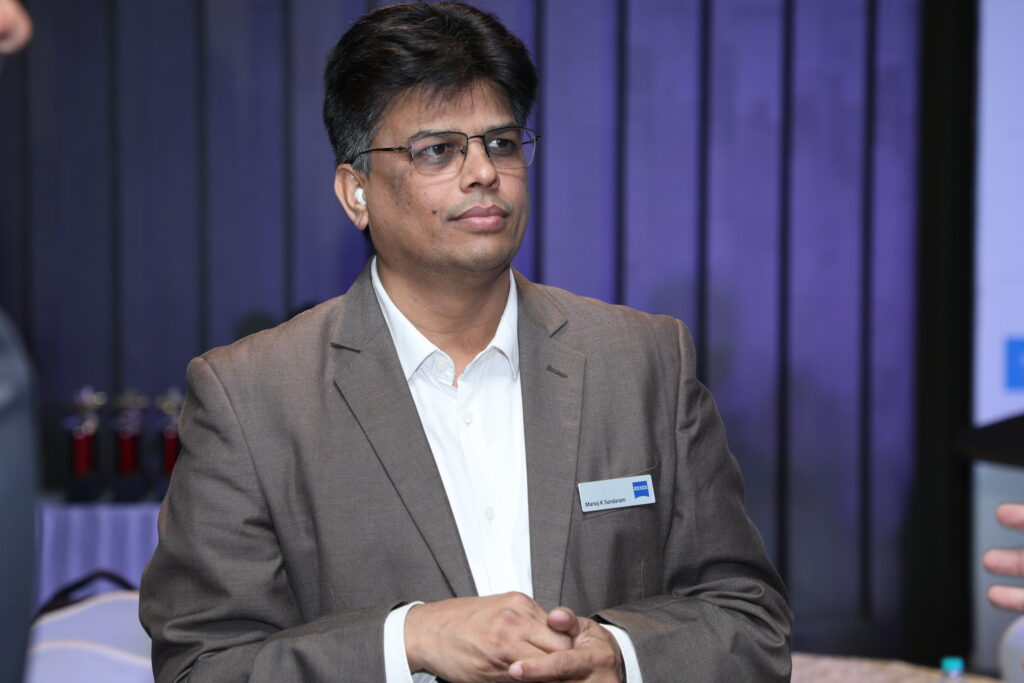
Approximately 8-10 months ago, during the Covid pandemic, we got an e-bike are home. I vividly recall going with my son for a ride on one of these bikes; the experience was truly amazing, as we could feel the power of the electric vehicle. Overall I’ve seen that this technology is versatile and suitable for all ages, from children to adults, and it performs well at both ends of the spectrum.
Raman Upamanyu: I have not driven an EV personally, but during one of my rides in an EV, I noticed that the best thing about an electric vehicle (EV) is its lack of noise. When you’re inside the vehicle, you hardly realize you’re sitting in a moving car because the noise level is so minimal. I’m looking forward to driving an EV myself in the near future.

Q. Since battery technology is central to the EV strategy, do we have adequate infrastructure and trade network that can support battery production? To what extent do we depend on the international markets for components and raw material procurement? What measures could the govt and industry take to improve procurement and production?
Abhijeet Sinha: Battery technology and production have become focus areas for both government and the private sector. Industry stakeholders could collaborate to reduce our dependency on lithium. Supply chains of minerals such as aluminium, of which India is the second producer and an exporter, could be explored. We still have to import the grade of aluminium fit for battery use – the focus needs to be on developing the supply chain of aluminium, for example. Another important thing related to regulation that I want to mention is: Being the National program Director for Ease of Doing Business, I talk to a lot of people from the industry who are candid about their difficulties of doing business.
One of the main challenges, they say, is the lengthy time of response to incidents such as fires. By the time a company has adapted to a new standard, another fire may occur and necessitate further changes. This issue is a source of frustration for businesses and has prompted us to formulate a solution.
To address this problem, I have been advocating for the development of a behavioural standards for batteries. This would involve connecting each battery to a cloud device that records data such as daily charging and discharging patterns, as well as heat levels. By doing so, any battery exhibiting abnormal behaviour could be identified and recalled before it poses a risk to users.
Additionally, I propose the use of “Black Box” devices that can record data from a battery in the moments leading up to an incident, such as a fire. This data can help determine the cause of the problem and prevent speculation among industry players during the critical investigation period.
Implementing these measures would ensure greater safety and accountability in the industry while minimizing the potential for unexpected regulatory standards to disrupt business operations.
Narayan Kumar: The cost of the vehicle is significantly influenced by the battery, which typically accounts for around 35-40% of the total cost. While larger economies of scale may bring this percentage down, it’s important to note that increased volume and decreased lithium mining may also cause the overall cost to rise. From a technological standpoint, lithium is crucial due to its energy density, which allows for more energy to be packed into each kilogram of the battery. However, there are other metal combinations being experimented with, such as sodium, nickel, and others, and it’s important to consider the overall availability of these resources on a country-by-country basis.
It’s also worth noting that the battery management system, which includes components like the battery disconnection unit, is just as important as the battery itself. As the industry evolves, battery density will likely increase and costs will come down, but it’s crucial to consider the entire energy architecture and ecosystem rather than just the battery in isolation.
Sameer Jindal: While the focus is currently on lithium and cobalt imports, India has a wealth of other raw materials available, including magnesium, nickel, copper, aluminium, graphite, and titanium, that should also be explored. The development of alternate batteries, such as sodium batteries, is underway, which will help reduce dependence on lithium in the future. Battery technology is a combination of the battery management system (BMS) and different components, and safety features like the Honeywell BAS device can help prevent thermal runaway. Indian infrastructure is capable of building batteries, except for the cells, which are still imported. Companies are now developing algorithms for safety aspects, and wiring and harness connectors are readily available in India. Localizing production and building in India can bring down costs, and with the launch of a new smaller EVs, manufacturers are already moving in that direction.
Safety is a top priority, and extensive testing has been done, as witnessed by participation in BIS which is rolling out for cells and batteries. For example, the industry is currently implementing AIS 038 (Amendment 3) safety requirements issued by the Ministry of Road Transport and Highways.
Uday Narang: Ensuring battery safety is of paramount importance because every human life is precious. It is encouraging to see industry giants like Panasonic and MG emphasizing this critical aspect. However, as original equipment manufacturers (OEMs), we have been operating in this space for a long time. It is essential to remember that, in the pursuit of quick profits, we should not overlook the fact that we are operating in the automobile industry, not the startup world. We must uphold our responsibility to ensure safety standards.
It’s not just about making quick profits. As a former hedge fund manager, I understand the pressure to deliver immediate returns, but we must prioritize safety and sustainability in our business practices. To all the aspiring entrepreneurs out there, whether you’re building two-wheelers, three-wheelers, or four-wheelers with ambitions of selling millions of vehicles, I urge you to take your time and prioritize safety first.
I believe that the recent fires due to certain causes, and it’s important to note that I’m not criticizing a region or a company. While companies like CATL produce excellent products, using low-grade cells from China can leave vehicles vulnerable to incidents. I believe that investing time and resources into R&D and utilizing high-quality cells and technology will result in safer and superior products.
At our company, we’re exploring alternative materials such as lithium, zinc, and aluminium, and we’re excited to announce a new partnership with a US-based gigafactory that prioritizes safety and produces high-quality products. It’s crucial to prioritize safety before selling vehicles or raising funds, as the individuals who will be riding in these vehicles could be our loved ones or someone else’s family. Instead of simply focusing on raising funding, it’s important to prioritize testing and developing new technologies that are safe and reliable.
The ongoing debate surrounding the cost of batteries is a significant issue, as it constitutes around 30% of the total vehicle cost. However, I am optimistic that this will change with scale. At our company, we are currently exploring various technologies that use hydrogen and other alternatives through our global R&D centers. Nonetheless, I must emphasize the importance of prioritizing safety in the production of these products, even if it takes longer to do so. India has the necessary talent, companies, and capital to become a significant player in the EV sector. However, I must caution startups against rushing into production without prioritizing safety, as building safe products should always come first. It’s concerning to see new two-wheeler manufacturers, each claiming to sell millions of scooters. However, building and scaling up production takes time, and we cannot ignore the importance of safety in this process.
Q. Manoj, from a quality assurance point of view what does it require in the EV industry what are the boxes to be checked?
Manoj K Sundaram: Many points have been raised regarding the importance and grading of batteries from various sources. We have collaborated with both startups and established companies in the two-wheeler and four-wheeler industries in India to address this challenge.
At our Bangalore plant, we have the capability to check individual cells and complete battery management systems for quality control. We, not only grade cells based on electrical voltage but also on the stability of their internal structural components. Our technology enables us to sample, and grade imported cells to ensure safety standards are met. As it has been mentioned, the cost of batteries accounts for 30% of a car’s total cost, and the cathode alone accounts for a significant percentage of the battery pack cost.
Most of the components that go into making a cell are not manufactured in India, so there is a need to increase knowledge and skill levels in this area. We request the government to provide subsidies to component makers under the PLI scheme. We have the capability in India to check and qualify individual components, and we work with government institutes, private bodies, and startups to introduce safer chemistry suitable for tropical temperatures in India. It is crucial to make the chemistry reliable and right for the Indian market, and we are working with both Indian companies and multinationals to achieve this goal by focusing on microchemistry and microcellular structure to improve safety.
Raman Upamanyu: I am happy to see that safety is a top priority for everyone on this panel. At Marposs, we have a solution that can help ensure the quality of the batteries through testing. Testing is critical to ensure safety, as Mr. Uday mentioned. Once the battery pack is manufactured, we must conduct two types of testing: leakage testing to ensure the product is leak-proof at both the cell and pack level, and electrical testing to thoroughly test all components, from the cell level to the pack level. Marposs can support you with both types of testing.
Mr. Manoj mentioned that the cost of the battery comprises about 30% of the total cost, and individual cell costs are high. The government has introduced schemes to start making cells in India, but for some parts, such as NMC and LFP cells, we still need to rely on China for raw material processing. To reduce costs, we need to establish processing centers in India. Although we have copper and other raw materials, we lack the technology and facilities to process them efficiently. We must continue working towards reducing our dependence on other countries for crucial components.
Abhijeet Sinha: It is crucial for us to prioritize the development of components, and the implementation of a battery-swapping policy. This policy was recently announced and has undergone extensive consultation with Niti Aayog and the Charge Point Operators Society of India. The draft policy is currently up for industry and consumer inputs. As a part of the National Highway EV initiative, all stations are proposed to have a battery-swapping cabinet. We have made many recommendations for the policy in consultation with stakeholders. These recommendations cover administrative, technical, and regulatory safety standards and are publicly accessible on the Charge Point Operators Society of India website. Additional recommendations, such as the Black Box, are also available for download. Please do not hesitate to reach out to me if you require further assistance.
Q. The EV charging infrastructure is key to a country’s EV adoption curve. India’s charging infrastructure at 1,640 operational public EV chargers dwarfs in comparison with China’s 810,000 public charging points and even lags far behind Germany’s 35,000 charging stations, a country one-tenth our size in population. One reason, of course, is the lower EV sales as a percentage of total vehicle sales in the country. What are the other main reasons behind our country’s sparse charging station density? What are the top measures that the industry and the government can adopt to boost and expand the country’s EV charging infrastructure?
Abhijeet Sinha: You have asked an important question which brings into light the backbone of the issue. Before discussing it, I want to make a disclaimer that my views are my own and not representative of the government. My views differ significantly from the industry’s current approach to charging infrastructure.
Instead of comparing electric cars with petrol or diesel cars, we should view it as an ecosystem that compares with public transportation options such as trams, e-highways, or metros. Comparing EV infrastructure with ICE car infrastructure is a mistake. It’s essential to understand the right comparison for all of us to make informed decisions regarding EV adoption.
There are two ways to make decisions: individual buying adoption decisions and institutional decisions. When making individual decisions, people consider factors such as finance, taxes, rebates, subsidies, and bank loans. Institutional decisions can mandate charging stations in residential, commercial, and office buildings to create small ecosystems that grow into EV charging locations. For instance, people could switch to EVs when entering specific premises. When I became the Project Director in NHEV (National Highways for EV) in 2018, I insisted that we focus on highways rather than cities. I was determined to ensure that each charger on the highway had at least a 70% utilization rate and that the capital expenditure on EV infrastructure would break even in 18-24 months. People thought this was overly ambitious. With the trials successfully completed, we understand how the highway infrastructure and mobility work. Fixed bus driver stops predict volume and stop points, and if you put a vehicle and charger together on highways, you are more profitable than in cities.
To make EV infrastructure profitable, in addition to focusing on privately-owned consumer vehicles, we need to focus on shared mobility and commercial mobility. For example, when planning National Highway EV stations, we also opened applications for two-wheelers and three-wheelers for cargo hubs, and now, they receive a lot of parcels from ecommerce players for delivery within a 50-kilometer radius.
Sameer Jindal: I have observed a significant increase in the development of charging infrastructure for electric vehicles (EVs) across the world from 2019 until now. This was a major concern for customers when purchasing EVs during that time. However, with improvements in the charging infrastructure, and considering that China has over eight hundred thousand charging points (although the number depends on the number of car sales in the country), the situation has improved.
Nevertheless, India still has relatively low EV sales, and the government has provided incentives to increase public charging infrastructure. Entities like BPCL and NTPC are working together with the government to expand the infrastructure across India. For example, MG Motors has installed charging points in residential areas, signed a contract with BPCL for further infrastructure, and is taking advantage of government schemes such as Fame II, PLI, and battery swapping.
Mr. Abhijeet rightly pointed out that different areas require different infrastructure, such as highway infrastructure for buses and trucks, last-mile mobility for three-wheelers, and confined areas of the city for two-wheelers. Each of these areas requires different stages and areas of infrastructure development, which would attract many more investors and provide them with decent returns on investment.
Another suggestion comes from a feature that we offer with our EVs. ZS EV has internet connectivity, and its map displays all the DC fast charging stations along the way. A fleet agency in Bangalore has a central control system that maps and monitors the charging points. Drivers have no anxiety about routes or charging stations, and a mobile van is available for emergencies. I believe that all these efforts will help India overcome the charging issue and make EVs a more attractive option in the next two to three years.
Narayan Kumar: I am also adding a disclaimer that these are strictly my personal views. Firstly, it’s important to note that the Indian automotive landscape is unique, one that has an 80% focus on two-wheelers. Secondly, we cannot simply replicate the petrol/diesel-pump infrastructure when it comes to EV charging. The current number of charging stations in the country is inadequate, given the explosive growth in EV sales, especially of two-wheelers. However, we must approach charging infrastructure from a use-case perspective, understanding the typical range and charging needs of different vehicles and users. For example, office-goers and e-commerce players who cover shorter distances may require a decentralized charging infrastructure, while highway users may need a hybrid charging model.
Ultimately, a hybrid approach to EV charging infrastructure is necessary, avoiding overcrowding and focusing on decentralization to promote EV adoption.
Uday Narang: I am currently focused on building sustainable infrastructure in rural India. While cities like Mumbai, Chennai, Pune, and Bangalore are great for raising capital, I believe that in order to achieve scale and address issues such as air pollution, we need to work together to promote green energy and sustainability across the country.
It is concerning to see the air quality index in the big cities, and we cannot solely blame politicians or certain industries for this problem. It is our responsibility as well to take action and ensure that our future generations do not suffer the consequences of our actions.
To promote sustainability, we need to bring charging infrastructure to tier 2, 3, and 4 cities as well as rural areas in Tamil Nadu and Karnataka. The charging infrastructure should be diverse and cater to the varying needs and pockets of the people. Building charging infrastructure in rural India is particularly important because the country’s population largely resides outside of the cities.
While some may be able to achieve high returns in the EV infrastructure and manufacturing business, it is important to have a long-term vision and focus on sustainability. This is a marathon, not a sprint, and we must keep this in mind when building charging infrastructure, batteries, EVs, hydrogen, and technology.
I recently attended an event on emerging India where there was a lot of discussion and work being done on charging infrastructure by companies such as Tata, Quench, and ChargePoint. However, I believe that our focus should be on building rural India where we can make a significant difference.
Manoj K Sundaram: Regarding the charging infrastructure, there have been many insightful points made about the need to address the requirements of rural India. As someone from a rural area, I share this belief.
The government must ensure that charging infrastructure is profitable, as it requires manpower to prevent damage and ensure its effectiveness. Additionally, the quality of batteries and charging times are crucial to the success of the infrastructure. Companies are currently working on reducing charging times to make it more efficient and profitable. This involves researching different chemistries and microstructures to make the process faster, akin to arranging books on a shelf. While faster charging technologies exists on a smaller scale, it will take time to implement it on a larger scale. Reduced charging times will help address the infrastructure problem.
Raman Upamanyu: Effective development of charging infrastructure is crucial in building consumer confidence in electric vehicles. Consumers may hesitate to purchase EVs due to concerns about charging availability during long trips. Therefore, prioritizing the development of charging infrastructure is key to encouraging widespread adoption of EVs. In addition to reducing air pollution, electric vehicles can also decrease noise pollution. By promoting EVs, we can create a sustainable ecosystem that benefits both our environment and society.
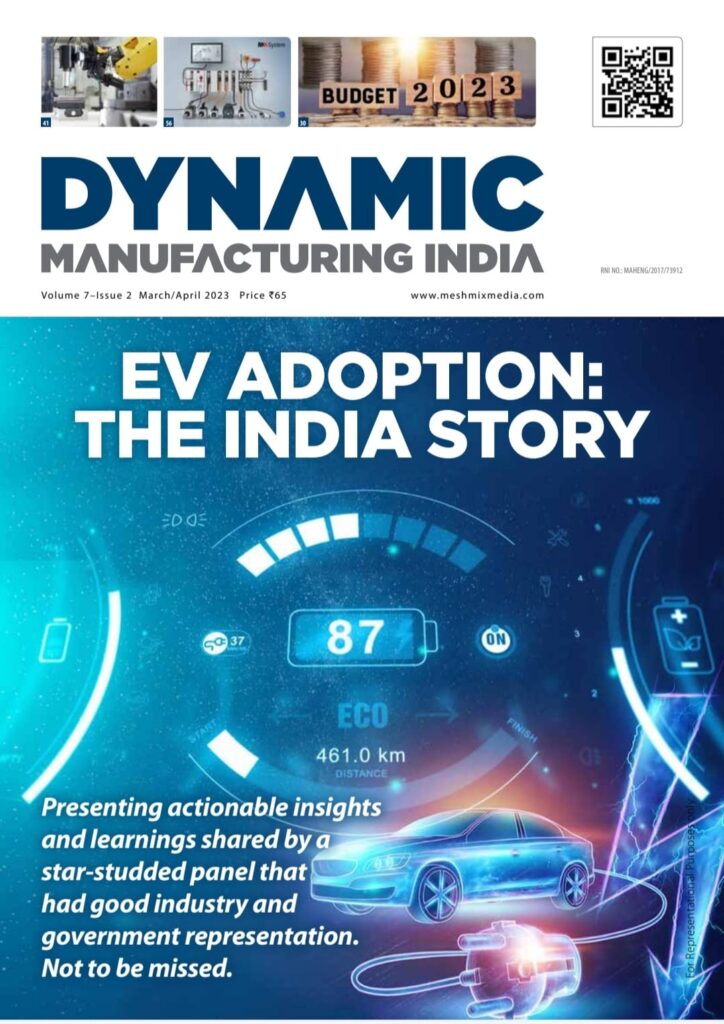
E copy of Magazine – https://www.machineinsider.com/dynamic-manufacturing-india-march-april-2023-electric-vehicle-special-issue/


